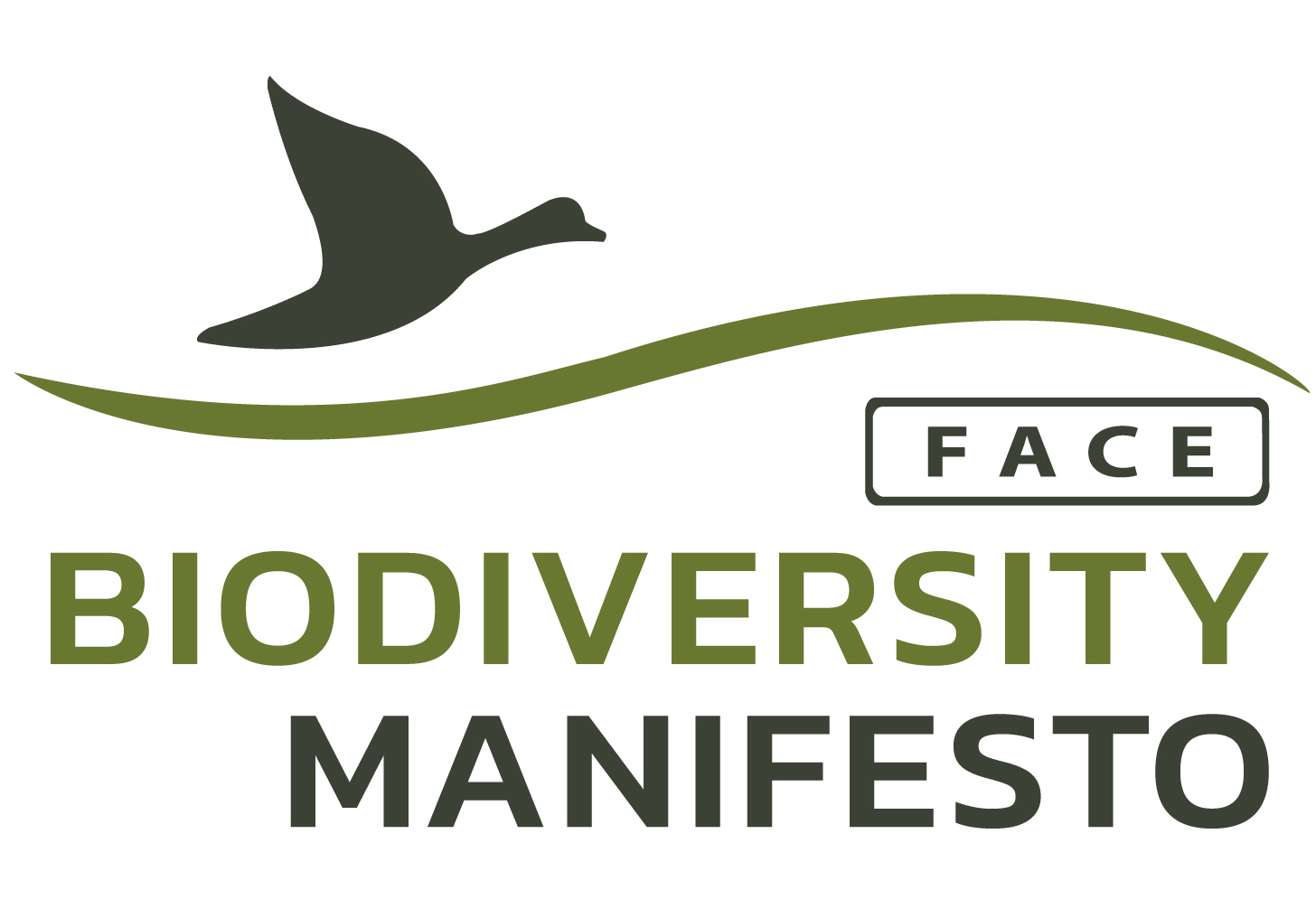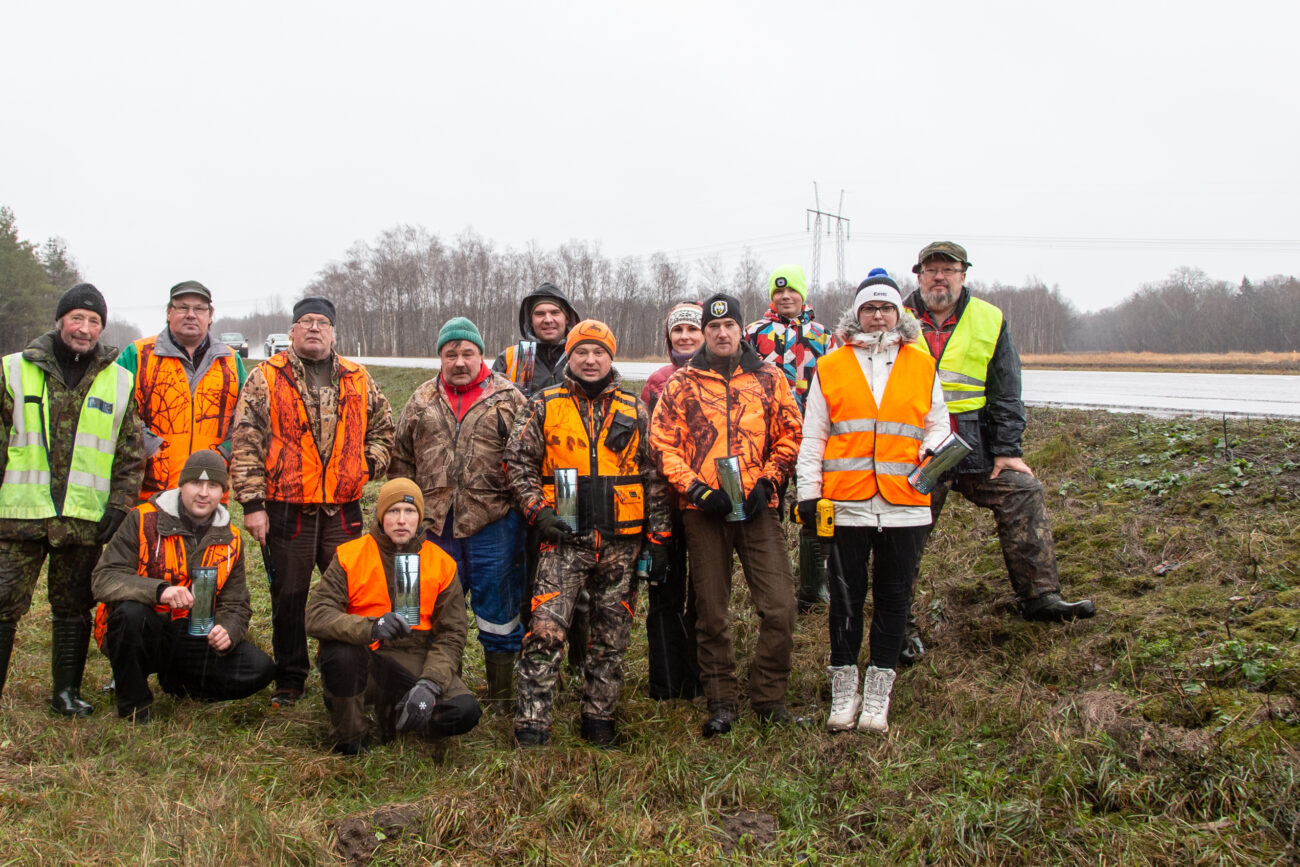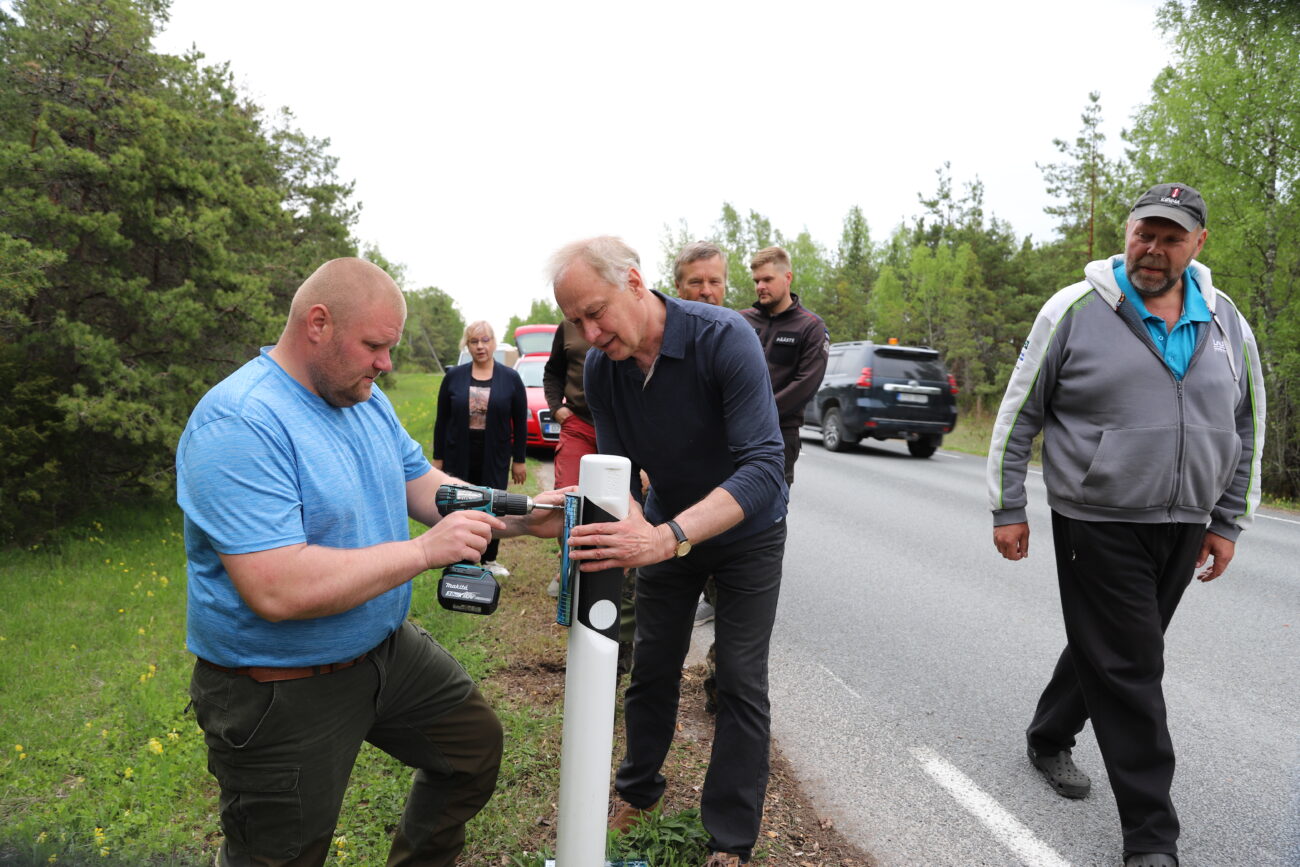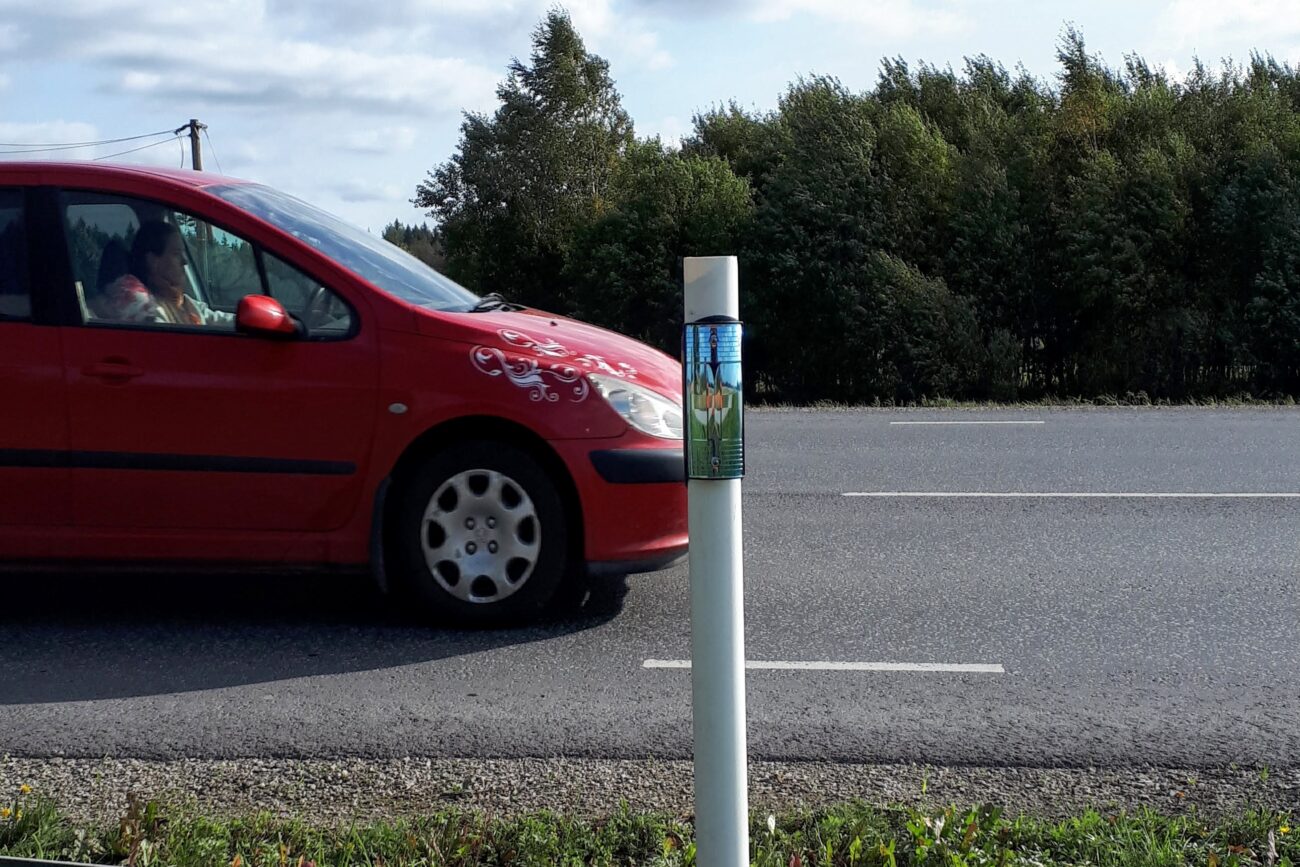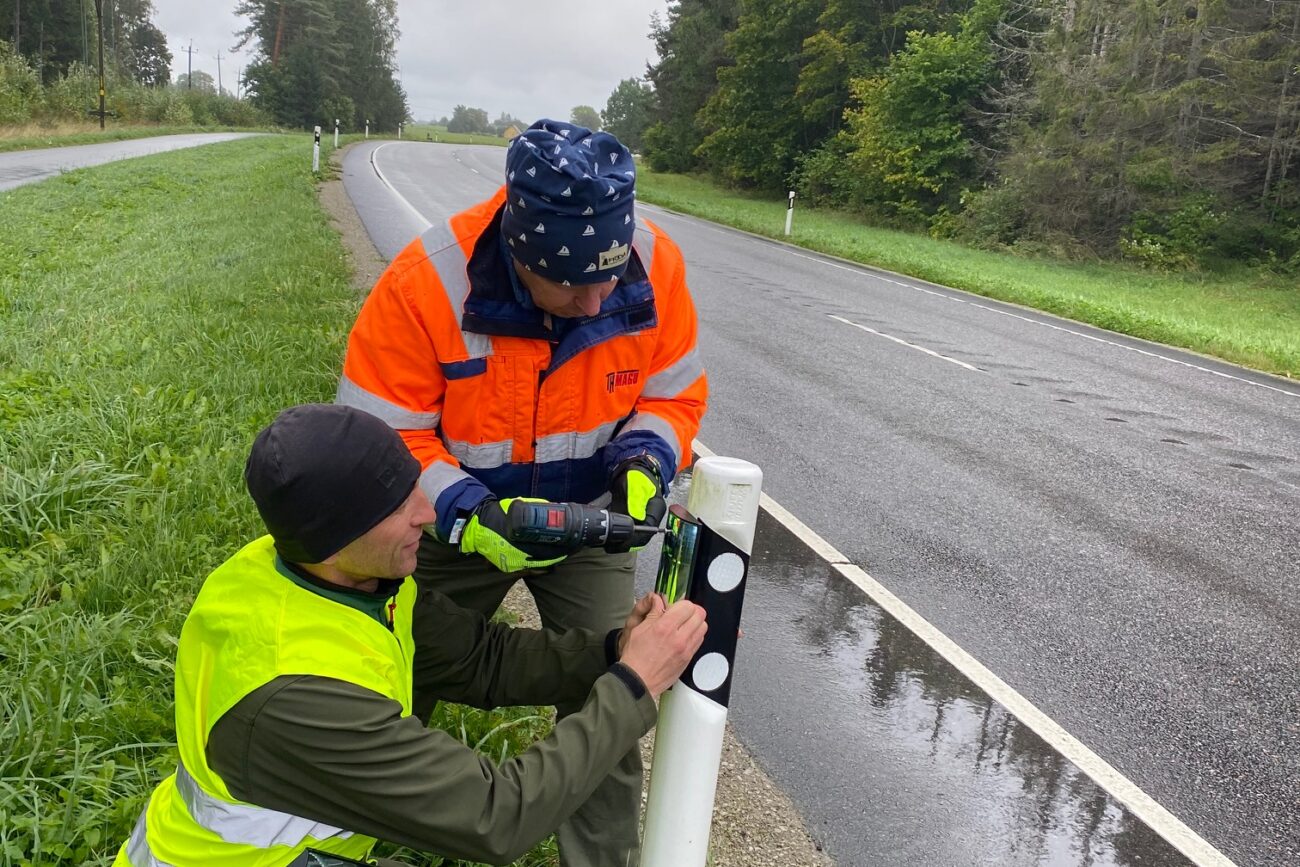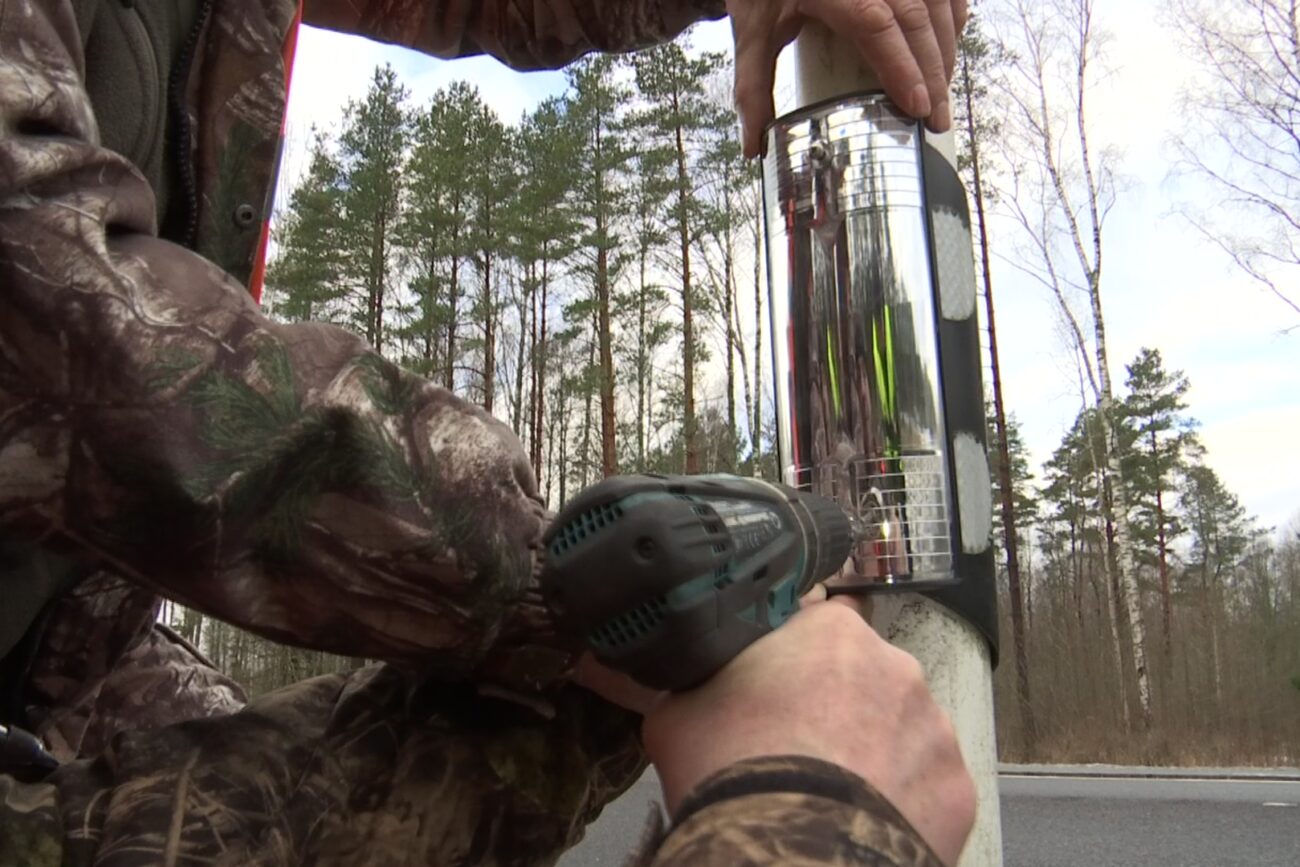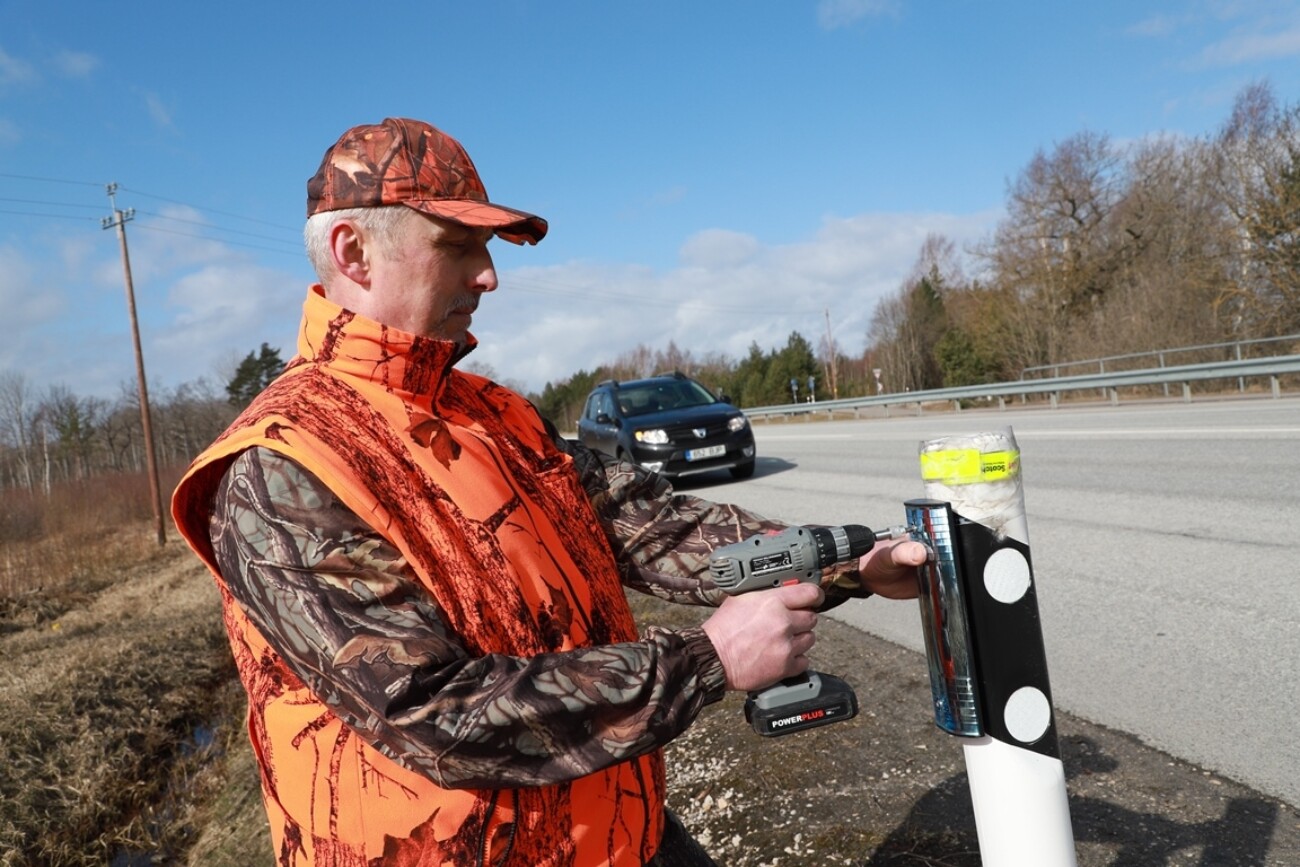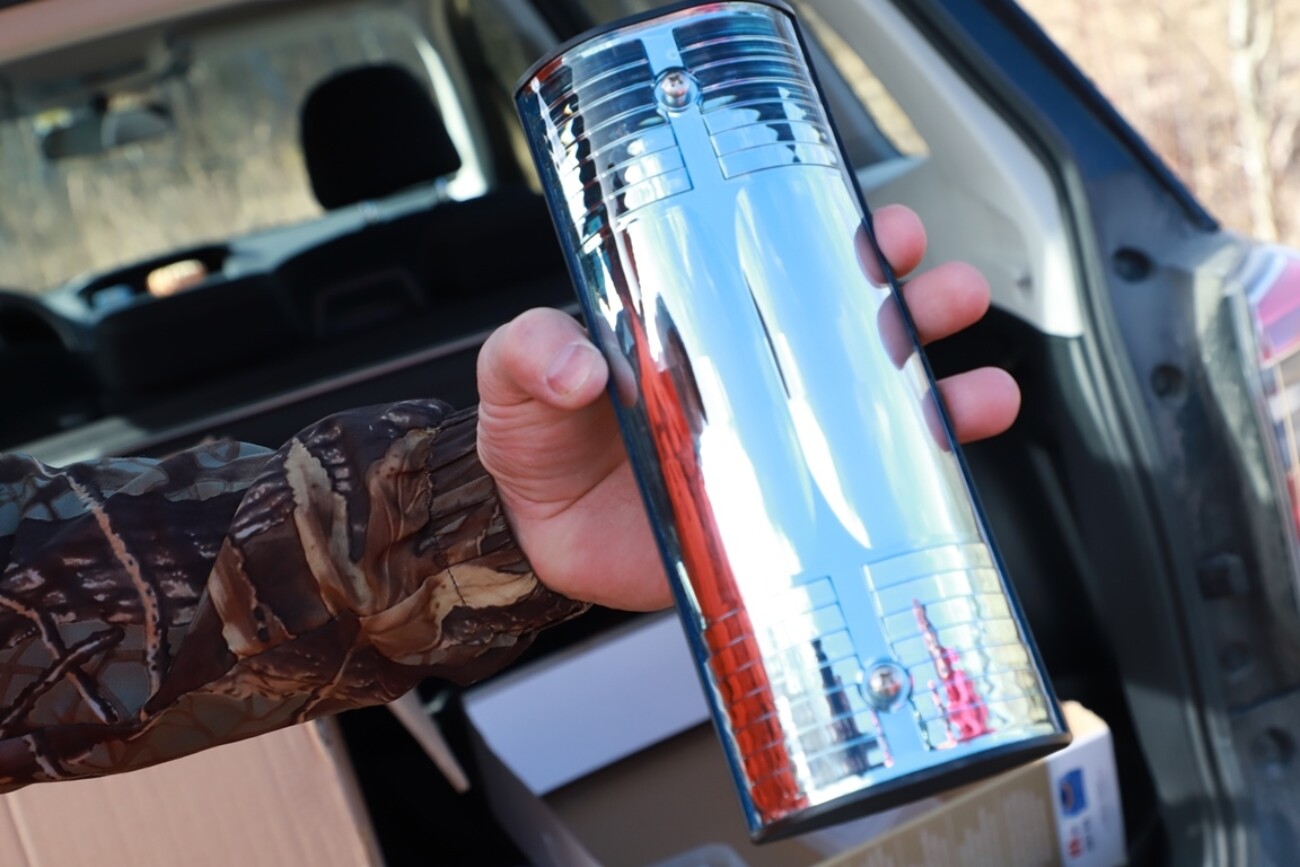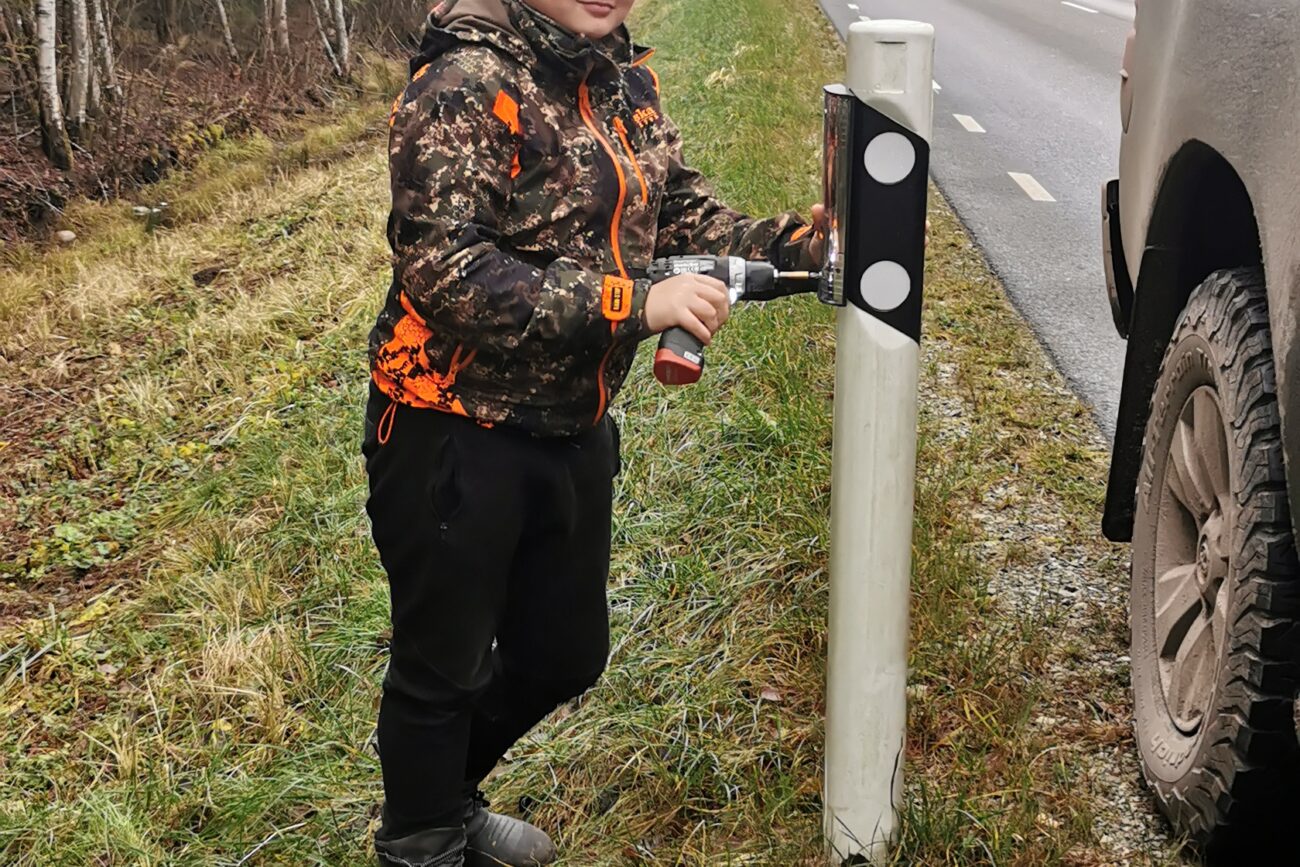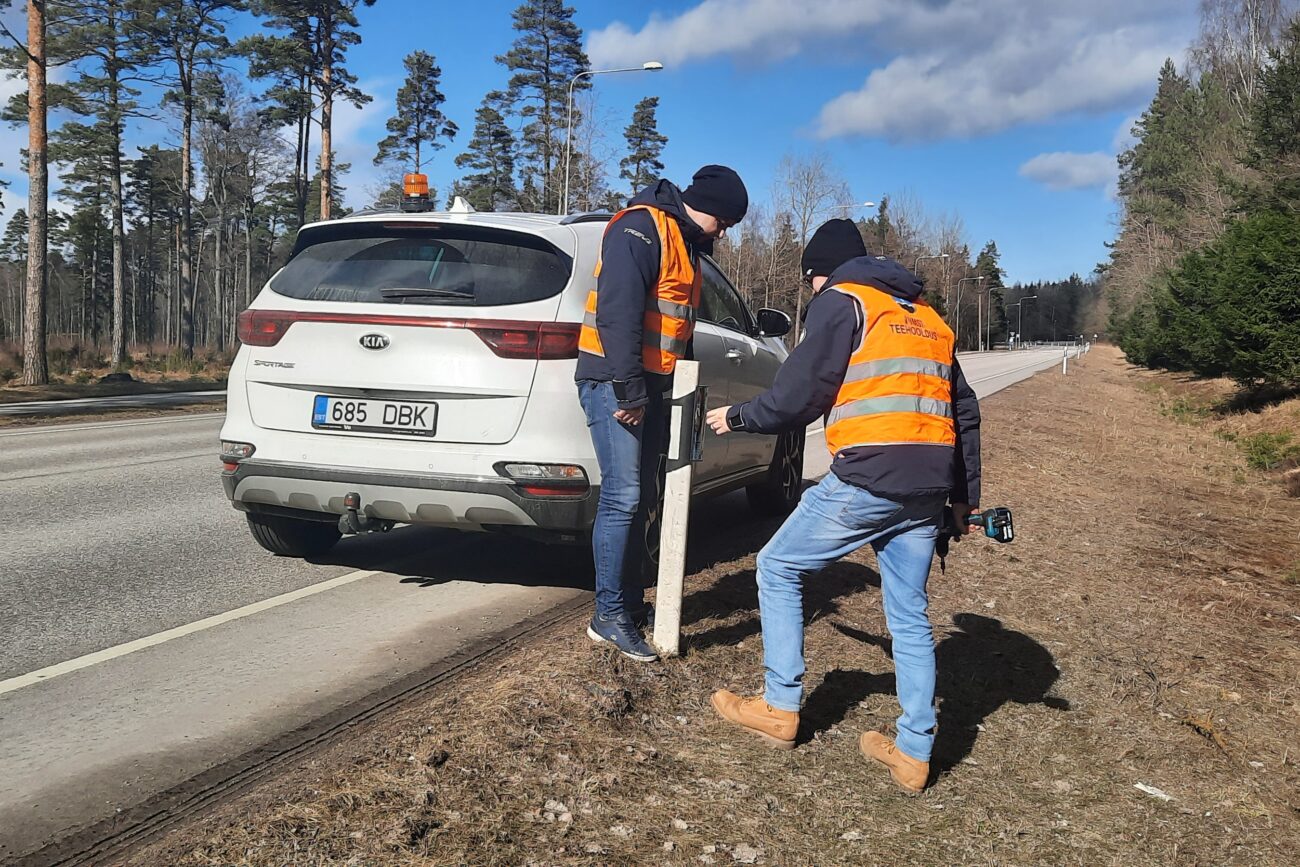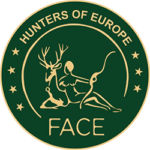Wildlife-vehicle collisions are a major safety concern that can cause economic loss as well as human injury and death. In 2014–2018 the number of registered wildlife-vehicle collisions in Estonia increased from 1332 to 4400 cases per annum.
As a response to the growing concern of its members, the Estonian Hunters’ Society (EHS) launched the project Wild Game on roads intending to reduce roadkill. Different inexpensive measures of road mitigation were looked into, and wildlife reflectors were chosen as the most potential measure.
Wildlife reflectors are generally considered to be the least effective when compared to fencing with or without crossing structures and animal detection systems. However, often these studies lack information on the type of reflector used. EHS chose the reflector produced by Beilharz GmbH, which combines the advantages of similar products on the market. The combination of the blue transparent or transparent body with aluminium film deposited on the rear creates the colours light-blue or silver-white. These colour schemes allow maximum light reflection and at the same time optimal optical perception by wildlife. The horizontal radiation angle of 120° ensures the illumination of the complete area behind the delineator, thus creating the biggest possible barrier for wildlife.
Policy Relevance
This study is more proof of the importance of hunters’ management measures for game and non-game species. Even more, in an actual context, when the impact of climate changes is increasing all around the world. Hunters and game managers measures, such as building road reflectors, providing water and food, are deeply contributing to achieve the goals of the EU biodiversity strategy for 2030, fighting the effects of global warming and strengthening the resilience of biodiversity in this new reality.
From 2020 to 2022 wildlife reflectors were installed on 67 road sections that had previously been known as hot spots of wildlife-vehicle collisions. The length of these segments varied from 200 to 3500 meters. Additionally, 65 sections without reflectors from nearby areas were included for control. Some sections were in both reflector and control groups depending on the time of installation. Data on roadkill were gathered by local hunters and stored in the Hunters’ Information System (JAHIS – https://jahis.ejs.ee/) and linked to specific road segments included in the study based on location. A total of 318 ungulate roadkill events, including 277 roe deer (Capreolus capreolus) events were registered during three years in different study areas. The number of roadkill events per annum was described for each road section included in the study, there was a total of 148 data points for sections with reflectors and 149 points for control sections.
To analyze these data for ungulate and roe deer roadkill events, a mixed modeling approach was used and the ID of each specific study section and year were included as random factors. Section type (reflector or control), time from including to study in years (0, 1 or 2), and length (in 100 meters) were included as fixed effects and used to build different candidate models. These models were then compared in terms of goodness of fit. The best models for both ungulate and roe deer roadkill events included all the named factors. The probability of roadkill events increased with the length of section (β = 0,048, SE = 0,009, p < 0,001 for all events and β = 0,044, SE = 0,011, p < 0,001 for roe deer) and is lower for reflector sites (β= –0,310, SE = 0,159, p = 0,051 for all events and β= –0,478, SE = 0,175, p = 0,007 for roe deer). Also, the probability of roadkill events was lower one year after inclusion in the study (β = –0,466, SE = 0,152, p = 0,002 for all events and β = –0,425, SE = 0,162, p = 0,009 for roe deer), however, due to a short time-frame and small number of sites that were included on the first year, these results are difficult to interpret.
This pilot study demonstrates the effect of wildlife reflectors in reducing roadkill, particularly when roe deer is concerned. Based on our results and an average roe-deer-vehicle collision hot-spot section of 1 km length, 36 to 58 roe deer were spared during this pilot study. The average cost of a roe-deer-vehicle collision is approximately 2500 Euros. Therefore, 90 to 145 thousand Euros were saved by insurance companies during three years in our study areas. We conclude that these specific wildlife reflectors can be used as an effective measure of road mitigation. However, long-term effects and impact on other species still need further study.
